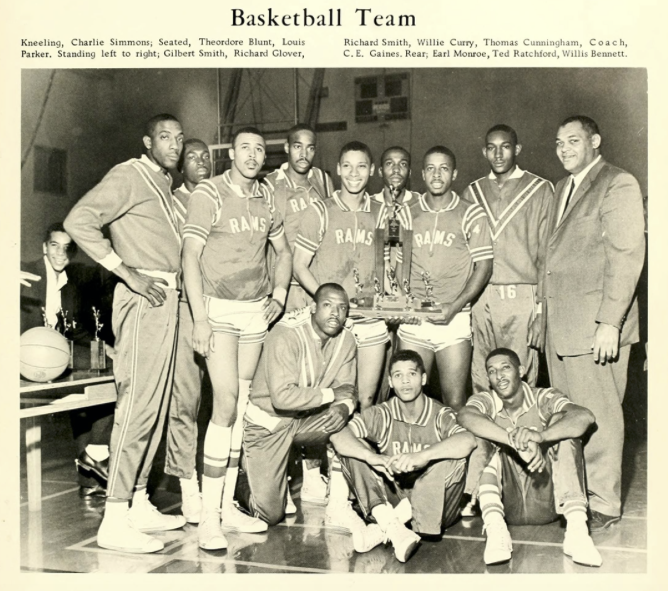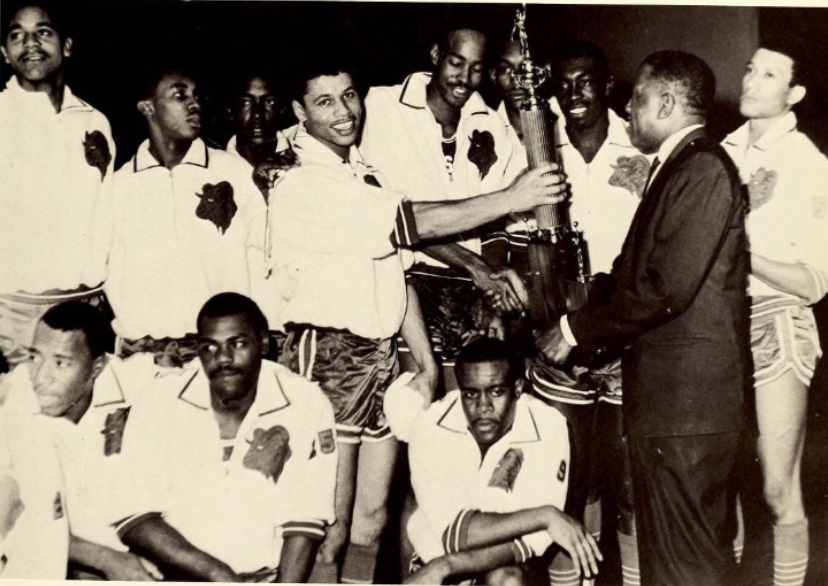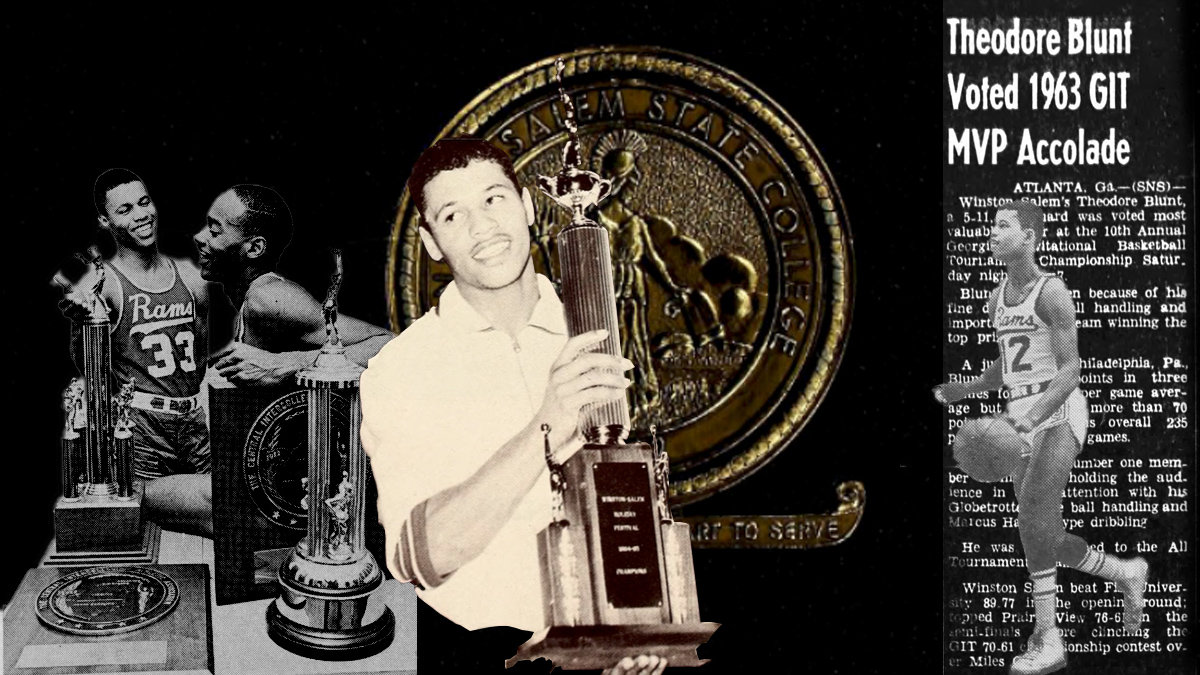
Meanwhile, back in North Philly, Leon Whitley had his eye on another young ball player he thought might be able to help his beloved Coach Gaines.
His name was Vernon “Earl” Monroe.
The talented guards had seen each other around – North Philly is only so big, after all, especially for a Negro kid in the 1950s. Blunt’s Gratz team had played Monroe’s Bartram High School during his senior year, but Monroe hadn’t yet become THE EARL MONROE.
And he wasn’t THE EARL MONROE his first season in Winston-Salem. At least not most of the time.
“One could see his talent and his ability, especially in close games when we were losing and Coach Gaines would call Earl at the last minute, and he’d score maybe 18-20 points in six minutes. He’d take him out of the game, put him back on the bench and he’d say ‘you gotta earn your way onto the starting lineup.”

By Earl’s sophomore season his talent was too good to be denied, and he was inserted into the starting lineup alongside Blunt. The two formed one of the great all-time backcourts in CIAA history, and led the team to a 23-8 record.
“Teddy and I both understood and our roles, and that’s why we worked so well together,” Monroe wrote in his autobiography ‘Earl The Pearl: My Story.”
By the time Blunt was a senior he was well accomplished as a player and still earning accolades, but the 21-year-old, who was already a father, began having trouble with the arches of his foot. In his book, Monroe remembers his senior teammate being unable to practice with the team due to the arches in his feet.
“So Coach Gaines saved him for just playing in the games,” Monroe wrote. “Everyone on the team was cool with that because we had so much respect for Teddy and, like I said, we all liked him so much.”

“But when he could play he saw the game extremely well, was unselfish, passed the ball to others in the spot they needed to be in to get a great shot. Teddy just controlled the game with his intelligence and knowledge and I really loved playing with him.”
It was that type of resiliency and leadership that allowed Gaines to trust Blunt so early in his career when he made one of the 50 greatest players in NBA history come off the bench as a freshman a few years later.
“The biggest thing he drilled into me was that I was more than just a basketball player. He said I was a leader,” Blunt remembers. “That’s a high compliment.”
“He said ‘you will be a leader of men. I said ‘okay, coach I don’t know what you’re talking about. I’m just 20 years of age. I don’t know what the hell that means.”
But true to his mentor’s word, there was a leader inside young Teddy Blunt, and the world would soon come to know it.
Come back for Part II of the Ted Blunt Story.
[postBannerAd]
